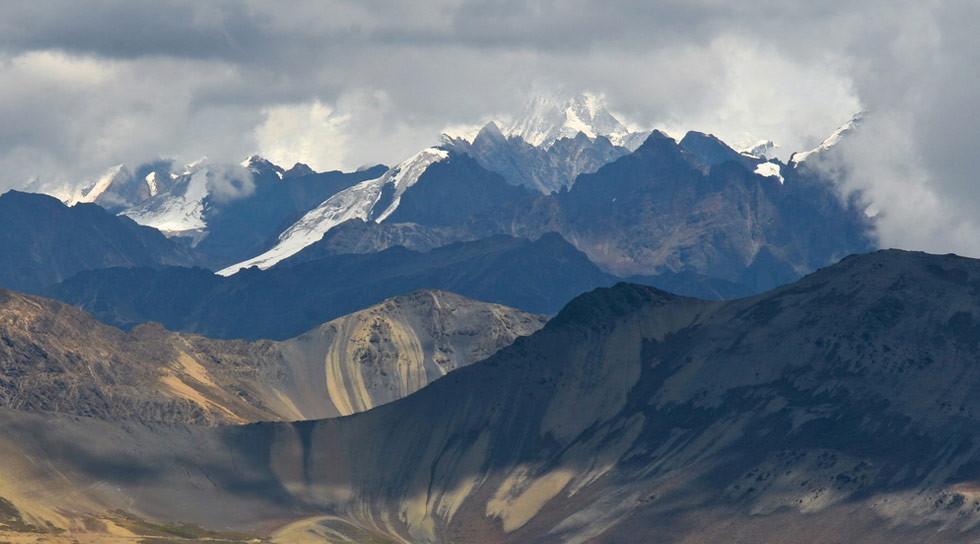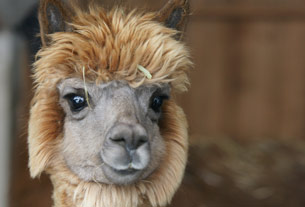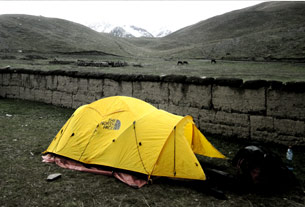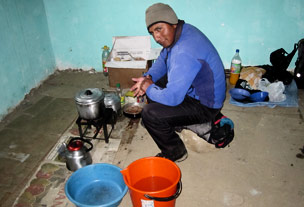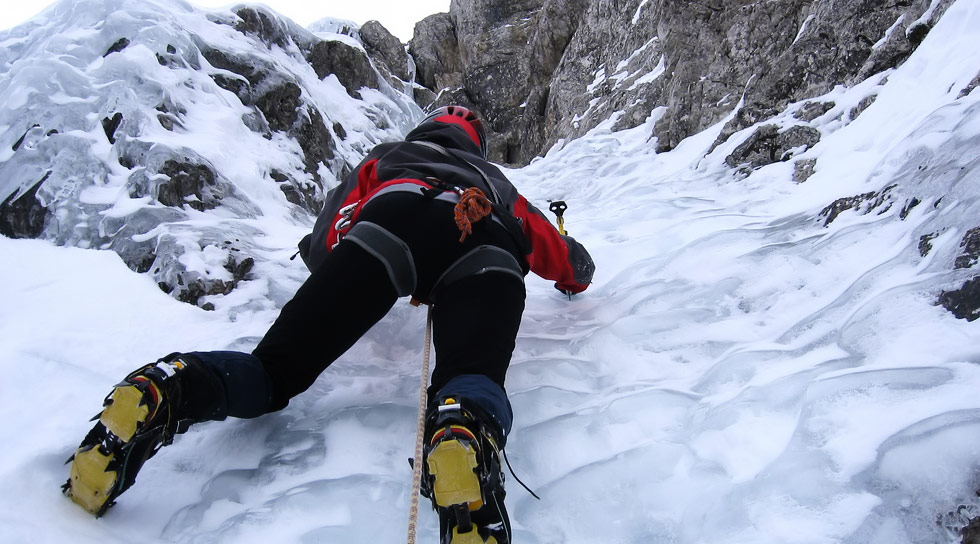“If you fall, slam the axe hard into the ice” yelled my guide Alesio from the
bottom of the glacier.
“Try now – go!”
Taking as deep a breath as you can at over 5000 metres, I pulled my feet from the ice and instantly shot downward; using all my strength, I hammered the axe at the glacier. Unfortunately, after three days’ of high-altitude trekking and sporadic sleeping in below-freezing temperatures, all my strength was not nearly sufficient to secure 8 stone of person to a wall of ice with one hit, and I was soon dangling from my safety harness like a rag doll.
Half way up a glacier in Bolivia’s Cordillera Real mountain range, I was learning the basics of ice climbing in preparation for a night-time ascent of 6088-metre peak Huayna Potosi; my hardy Bolivian guide Alesio and I had trekked for several days to get there, and I was knackered.
After a bumpy hour-and-a-half jeep ride from the haphazard cacophony of La Paz, we’d arrived in the modest mountain dwelling of Tuni: three huts, four people and fifteen llamas quietly existing 4448 metres above sea level.
With the steep slate-coloured slopes of the Cordillera Real layering off into the distance, our first day’s trek was a surprisingly gentle plod over undulating grasslands surrounding two large lakes. Around midday, Alesio produced two lukewarm plastic boxes stuffed with chicken, rice and fried banana. Taking a spot amid an unfazed cluster of llamas and alpacas, we chomped our fare while he pointed out the dark shell of a former gold mine scarring a neighbouring hillside.
“The mountains might look grey, but beneath us is all kinds of treasure” he said, profoundly, before ladling the last chunk of fried banana into his mouth and leaning back for a post-lunch snooze.
At dusk, we set up camp by a pair of mud huts. Mules led by a small man, whose face was nearly entirely covered by a thick woollen balaclava, dropped off our sleeping and cooking essentials, and Alesio swiftly assembled my home for the night – a small and decidedly unauthentic North Face tent.
Huddled in the yellow dome, my breath billowed around me, and I could no longer feel my feet. In a bid to maintain any remaining body heat, I put on everything in my rucksack – three T-shirts, four pairs of socks, long johns, two pairs of trousers, hoody, fleece, and a bobble hat – and waddled over to join Alesio in a steaming bowl of vegetable soup. Looking out into the darkness, I asked what, other than llamas and alpacas, lives in this high and inhospitable landscape? “Puma.” “…Pumas?” “Si.” Right.
Back in my tent, still bundled up in all my clothes, ears pricking at any scuffle that could possibly resemble the nocturnal movements of a hungry wildcat, I drifted into a light sleep.






